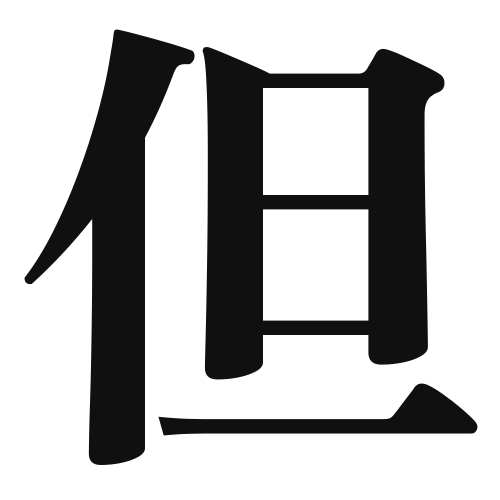1. Overview of Meaning
The kanji “但” (pronounced “dan”) means “but” or “however.” It is used to introduce a contrast or exception in a statement.
2. Formation and Radical
Formation of the Kanji: The kanji “但” is a combination of two components. The left part is “亻” (a variant of the radical for “person”), and the right part is “旦,” which originally represents the concept of dawn or daybreak. Together, they convey the idea of a person making a distinction or exception.
Radical: The radical for “但” is “亻,” which is related to human actions or characteristics.
3. Examples of Usage
Common Words and Phrases: “但し” (tadashi) is a common phrase meaning “however” or “provided that.” Another example is “但し書き” (tadashigaki), which refers to a note or condition.
Example Sentences in Daily Conversation:
- この本は面白いですが、但し少し難しいです。
(This book is interesting, but it is a bit difficult.) - 彼は行きたいと言った。但し、時間がない。
(He said he wants to go; however, he doesn’t have time.)
4. Synonyms and Antonyms
Similar Kanji: A similar kanji is “しかし” (shikashi), which also means “but.” The difference is that “但” is more formal and often used in written language, while “しかし” is more common in spoken language.
Antonyms: An antonym of “但” is “そして” (soshite), which means “and” or “also,” indicating addition rather than contrast.
5. Cultural and Historical Background
Relation to Japanese Culture: The use of “但” reflects the Japanese language’s tendency to express nuances and subtleties in communication. It is often used in formal writing and speeches.
Proverbs and Idioms: One common idiom is “但し書きがある” (tadashigaki ga aru), meaning “there are conditions,” which emphasizes the importance of understanding exceptions in various contexts.
